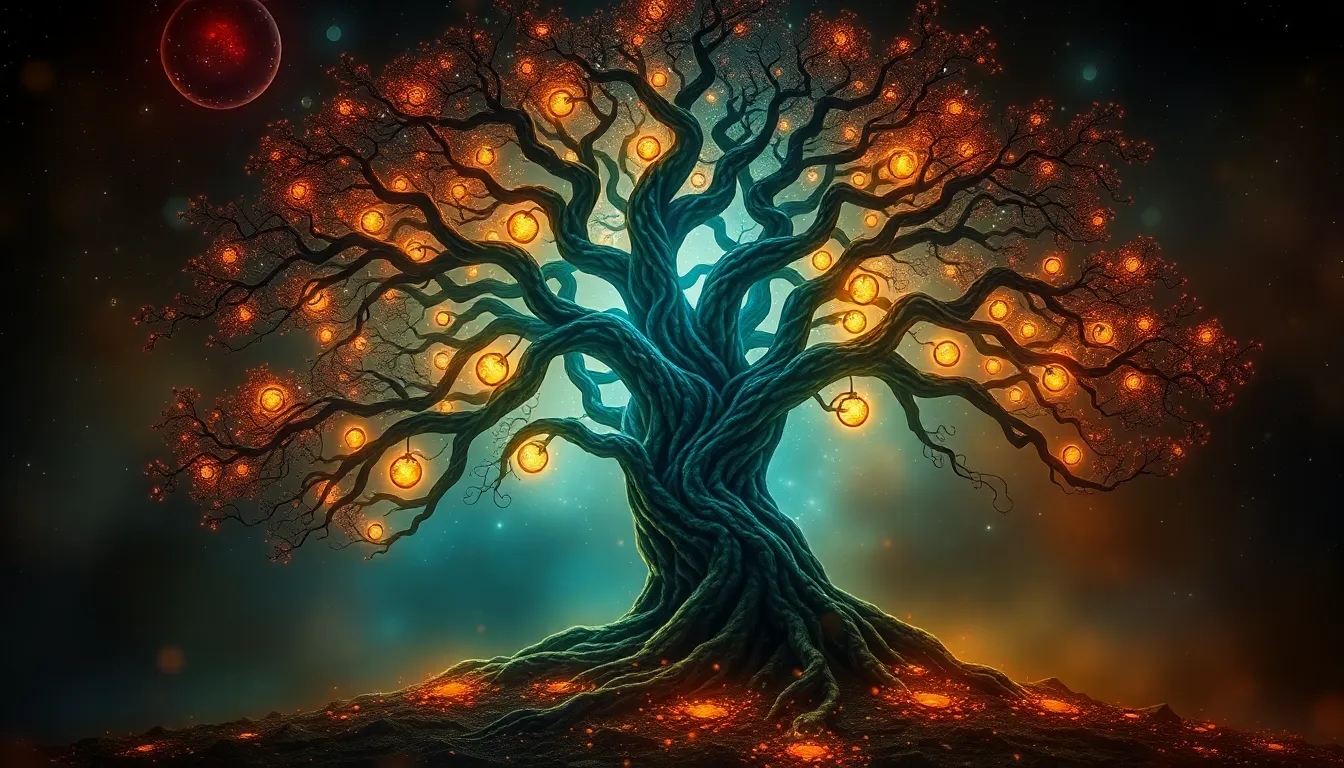The Firebird and the Seasons: A Mythical Connection to the Cycles of Nature
I. Introduction
The Firebird, a magnificent creature rooted in Slavic mythology, embodies the essence of magic, beauty, and the transformative power of nature. This mythical being, often depicted as a glowing bird with radiant feathers, symbolizes hope and renewal. As the seasons change, so too do the narratives woven into the fabric of nature, resonating with the cycles of life.
Seasons play a pivotal role in the natural world, influencing everything from weather patterns to agricultural practices. They serve as a reminder of the inevitable transitions we experience in life. This article aims to explore the profound connection between the Firebird and the cyclical nature of the seasons, unveiling the lessons embedded within this rich mythos.
II. The Firebird: Origins and Symbolism
A. Historical background of the Firebird in Slavic folklore
The Firebird, or “Zhar-Ptitsa,” has its roots deeply embedded in Slavic folklore, where it appears in various tales and legends. Often associated with the quest for a lost treasure or a beautiful maiden, the Firebird acts as both a catalyst for change and a harbinger of fortune. Its appearance often signals a moment of choice, leading characters to confront their deepest desires and fears.
B. Symbolic meanings associated with the Firebird
The Firebird is laden with symbolism, representing:
- Transformation: Just as the seasons transform the landscape, the Firebird embodies the potential for personal growth and change.
- Renewal: The cyclical nature of life is mirrored in the Firebird’s ability to rise from its ashes, emerging more vibrant than before.
- Hope: The glowing feathers of the Firebird serve as a beacon of hope in dark times, reminding us of the light that follows even the longest of winters.
C. The Firebird as a representation of transformation and renewal
Through its mythical journey, the Firebird encapsulates the essence of transformation and renewal, reflecting the natural cycles that govern the world around us. Its flight symbolizes the journey of life, where each stage brings new challenges and opportunities for growth.
III. The Four Seasons: A Natural Cycle
A. Description of the four seasons: spring, summer, autumn, winter
The four seasons—spring, summer, autumn, and winter—represent nature’s cyclical rhythm. Each season has its distinct characteristics:
- Spring: A time of awakening, where flowers bloom, and nature comes alive with color and vibrancy.
- Summer: The season of abundance, warmth, and vitality, where life flourishes under the sun.
- Autumn: A period of transformation, where leaves change colors and nature prepares for the coming cold.
- Winter: A time of rest and reflection, where the world slows down, allowing for introspection and preparation for renewal.
B. The significance of each season in various cultures
Different cultures have celebrated the seasons through festivals and rituals, each attributing unique significance to the cyclical patterns of nature. For example:
- Spring is often linked to rebirth and fertility, celebrated through festivals like Easter or Holi.
- Summer embodies joy and abundance, marked by harvest festivals in many cultures.
- Autumn is a time for gratitude and reflection, celebrated during Thanksgiving or the Mid-Autumn Festival.
- Winter symbolizes introspection and rest, observed through traditions like Yule or the Winter Solstice.
C. How seasons reflect the cycles of life and nature
Seasons encapsulate the cycles of life, illustrating themes of birth, growth, decay, and rebirth. They remind us that change is an essential part of existence, resonating with the human experience of growth and transformation.
IV. The Firebird’s Journey Through the Seasons
A. The Firebird’s role in spring: rebirth and new beginnings
In spring, the Firebird symbolizes rebirth and the promise of new beginnings. Its vibrant feathers represent the awakening of life, as nature sheds its winter coat and bursts forth in a riot of colors. This season invites us to embrace change and welcome new opportunities.
B. The Firebird in summer: abundance and vitality
As summer arrives, the Firebird embodies abundance and vitality. Its luminous presence reflects the sun’s warmth, encouraging growth and prosperity. This season teaches us to celebrate our achievements and savor the richness of life.
C. The Firebird during autumn: transformation and letting go
During autumn, the Firebird illustrates the theme of transformation and the necessity of letting go. As leaves fall and nature prepares for the winter, the Firebird reminds us that change is essential for growth. It encourages us to release what no longer serves us and to embrace the beauty of transformation.
D. The Firebird in winter: rest, reflection, and preparation for renewal
In winter, the Firebird symbolizes rest and reflection. As the world becomes quiet and still, it invites us to turn inward, allowing for introspection and preparation for the renewal that spring promises. This season emphasizes the importance of rest in the cycle of life.
V. Mythical Interpretations of the Firebird and Seasonal Change
A. Folklore narratives linking the Firebird to seasonal shifts
Various folk tales depict the Firebird as a pivotal figure in the transition between seasons. These stories often highlight the Firebird’s journey, mirroring the changes in nature and the human experience.
B. The Firebird as a guide through the transition of seasons
The Firebird serves as a guide, illuminating the path through the transitions of the seasons. Its presence encourages individuals to embrace the changes in their own lives, reminding them that every ending is a prelude to a new beginning.
C. Lessons from the Firebird’s story applicable to human life cycles
The narratives surrounding the Firebird offer invaluable lessons about the cycles of life:
- Embrace transformation and be open to change.
- Recognize the importance of rest and reflection.
- Celebrate abundance and the fruits of your labor.
- Let go of what no longer serves you to make way for new growth.
VI. Artistic Representations of the Firebird and Nature’s Cycles
A. Depictions of the Firebird in literature, music, and visual arts
The Firebird has inspired countless artistic representations throughout history. Notable examples include:
- Igor Stravinsky’s ballet “The Firebird,” which captures the essence of the mythical creature through music and movement.
- Various illustrations and paintings showcasing the Firebird in vibrant colors, emphasizing its connection to nature.
- Literature that explores themes of transformation and renewal through the lens of the Firebird’s journey.
B. How artists interpret the connection between the Firebird and the seasons
Artists often interpret the Firebird’s relationship with the seasons by highlighting its transformative journey, using vivid imagery and symbolism to convey the emotional depth of seasonal changes.
C. The Firebird’s influence on modern creative expressions related to nature
The Firebird continues to inspire modern artists, musicians, and writers, encouraging them to explore themes of nature, change, and renewal in their work. Its legacy is evident in contemporary environmental movements that draw parallels between the myth and the need for ecological awareness.
VII. The Firebird in Contemporary Culture
A. The relevance of the Firebird myth in today’s world
In contemporary culture, the Firebird myth remains relevant as a symbol of hope and transformation. As individuals navigate the complexities of modern life, the Firebird serves as a reminder to embrace change and seek renewal.
B. Symbolic uses of the Firebird in environmental and ecological movements
The Firebird has been embraced by environmental movements as a symbol of rebirth and ecological consciousness. Its story underscores the importance of nurturing the earth and recognizing our interconnectedness with nature.
C. The ongoing legacy of the Firebird in popular culture and spirituality
<p




